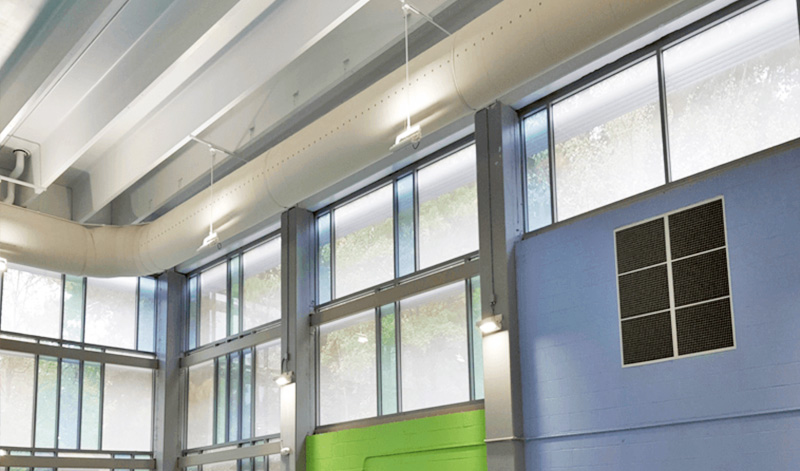
Ductwork Cut From a Different Cloth
Fabric air ducts — also known as air socks or flexible ducts — are often found in commercial and industrial facilities. These flexible tubes, made from polyester materials, are used for air distribution in open, architectural ceilings and exposed ductwork applications. They represent a cost-effective alternative to traditional metal duct systems for space conditioning, ventilation and makeup air.
Types of fabric ducts
Fabric ducts come in a range of airflow variances suitable for different air distribution applications. Non-permeable fabric is commonly used for heat transfer or space conditioning in industrial work areas. Permeable fabric is used for low-velocity airflow in food processing and pharmaceutical manufacturing facilities. Linear vents or holes can be placed on the duct surface and sized or patterned to adjust airflow according to needs.
Often made from a blend of polyester materials, manufacturers offer an assortment of fabric duct types suitable for a variety of applications. Typically, the options that are offered include:
- Industrial grade. A rugged, heavy-duty duct used for air distribution in warehouses or factory work areas, and for ventilation and makeup air applications.
- Design grade. Made from higher-grade fabrics and available in custom colors, design-grade ducts are often used in commercial and institutional settings where aesthetics and interior design are important.
- Specialty fabrics. These anti-microbial or anti-static fabrics are designed for specific applications, such as food processing or laboratories.
Benefits of fabric duct systems
For open-ceiling applications, fabric ducts offer a number of advantages over traditional metal duct systems:
- Cost effective. Fabric duct materials are cheaper to ship and require less time and labor to install, reducing costs.
- Design flexibility. Custom configurations and a variety of suspension options allow fabric ducts to weave in and out of almost anywhere.
- Uniform air distribution. Fabric ducts are permeable and distribute air evenly, eliminating the hot and cold spots often associated with metal ductwork.
- Lightweight. Fabric ducts weigh significantly less than metal ductwork, thus avoiding building or rooftop load-bearing issues.
- Low maintenance. Fabric ducts do not rust or corrode. If they become dirty, they can be taken down, laundered and re-installed.
- No condensation. Condensation does not build up on permeable fabric ducts, eliminating any mold or mildew issues.
- Noise control. Fabric ducts absorb more air handling equipment and air movement noise than metal duct systems.
- Modular. Duct systems can be easily reconfigured to meet changing workplace or air distribution needs.
Fabric ducts are not right for every application. Although they’re suitable for exposed ductwork applications, they’re not designed for use in closed walls or ceilings. Metal ductwork may be needed to deliver air from the air handler to the area where the fabric duct is applied. Fabric ducts have lower overall tube strength than metal systems, and non-permeable fabric ducts can develop condensation problems.